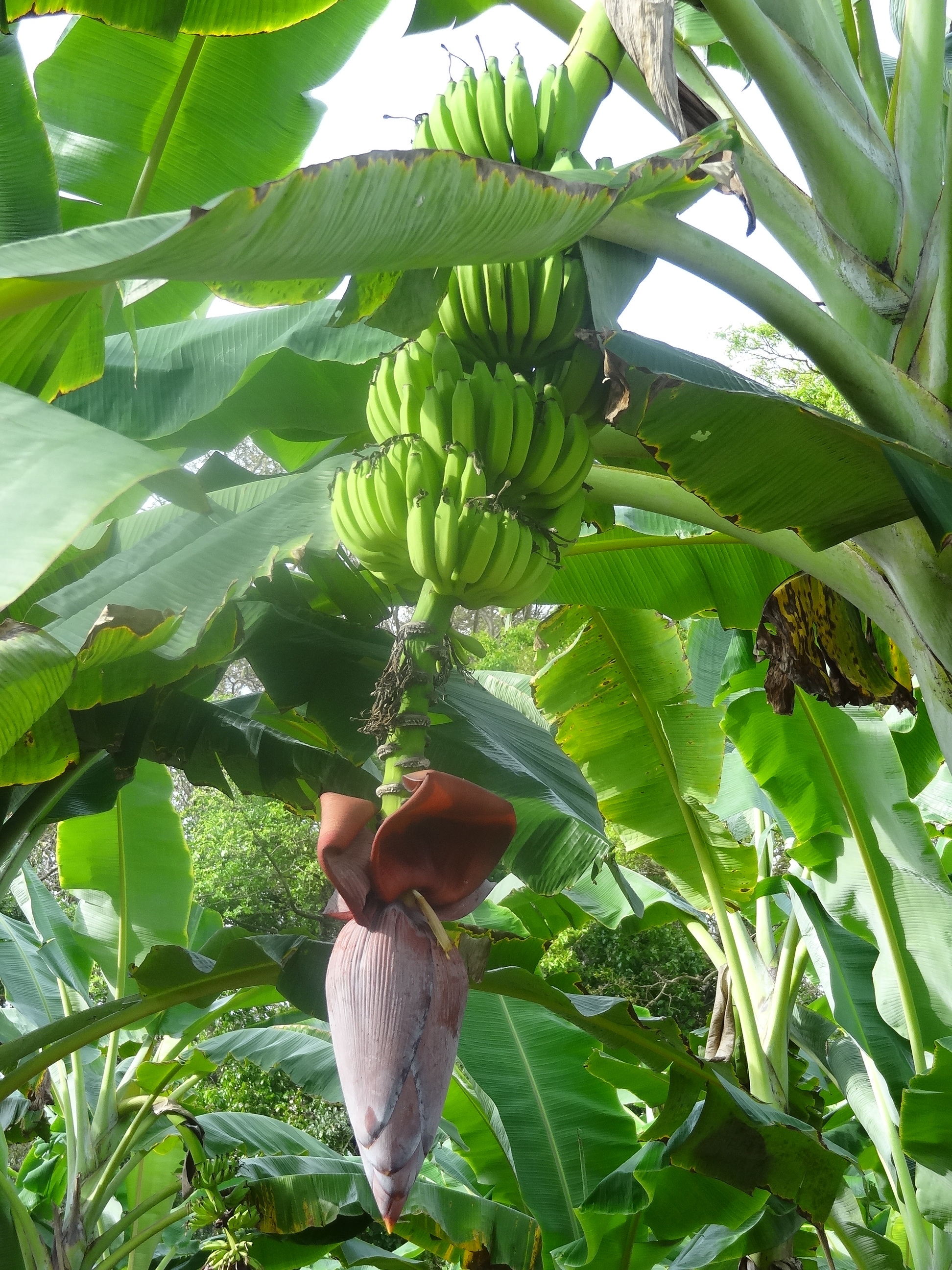
Banana
Musa spp.
Basic Information
🌿 Family: Musaceae🗺️ Zone: 9-11
Other Names:
- Plantain (for certain varieties)
🌡️ Ideal Temperature : 78°F – 86°F
🔥 Heat Tolerance: Up to 95°F
❄️ Cold Tolerance: Down to 57°F
🌱 Type: Perennial
Layers
- Canopy
Description
The banana (*Musa* species) is a fast-growing, herbaceous perennial native to tropical regions. Despite its tree-like appearance, it is classified as the world's largest herb. The plant features a pseudostem formed by tightly packed leaf bases, reaching heights of 2–9 meters (6.5–30 feet), depending on the variety. Large, oblong leaves can grow up to 3.5 meters (11.5 feet) long and 1 meter (3.3 feet) wide. The inflorescence, known as the banana heart, develops into clusters of fruits called hands, each comprising numerous fingers (bananas).
✂️🫘 Methods to Propagate:
- **Suckers (Pups):** The primary method of propagation is through suckers that emerge from the base of the mother plant. Select healthy pups approximately 1 meter (3.3 feet) tall with well-developed roots. Carefully separate them from the mother plant and transplant them to the desired location.
- **Division:** In some cases, division of the rhizome can be employed. This involves cutting sections of the underground rhizome, each containing at least one bud, and planting them separately.
🌞💧 Sun and Water Requirements:
- **Sun:** Bananas thrive in full sun, requiring at least 12 hours of direct, bright sunlight daily. While they can tolerate partial shade, optimal fruit production occurs with maximum sun exposure.
- **Water:** These plants have high water requirements due to their large, moisture-rich leaves. Maintain consistently moist soil, ensuring it is well-drained to prevent waterlogging. Inadequate watering can lead to reduced growth and fruit quality.
🧑🌾👩🌾 When to Harvest:
- **Fruits:** Bananas are typically ready for harvest 75–80 days after flowering. The fruit bunches are harvested when the individual bananas are plump and the ridges have rounded off, but while still green. Post-harvest, they ripen off the plant. Regular monitoring is essential to determine the optimal harvest time, as environmental factors can influence the maturation period.
Purpose
- Edible: Bananas provide a nutritious fruit rich in potassium, vitamins, and dietary fiber. Both the sweet dessert varieties and starchy plantains are staple foods in many cultures.
- Mulcher: The large leaves and pseudostems can be chopped and used as mulch to conserve soil moisture, suppress weeds, and add organic matter to the soil.
- Animal Fodder: Leaves and pseudostems serve as fodder for livestock, offering a supplementary feed source.
- Windbreaker: When planted densely, banana plants act as effective windbreaks, protecting more delicate crops from wind damage.
- Border Plant: Their substantial size and rapid growth make them suitable for creating natural borders or privacy screens in garden designs.